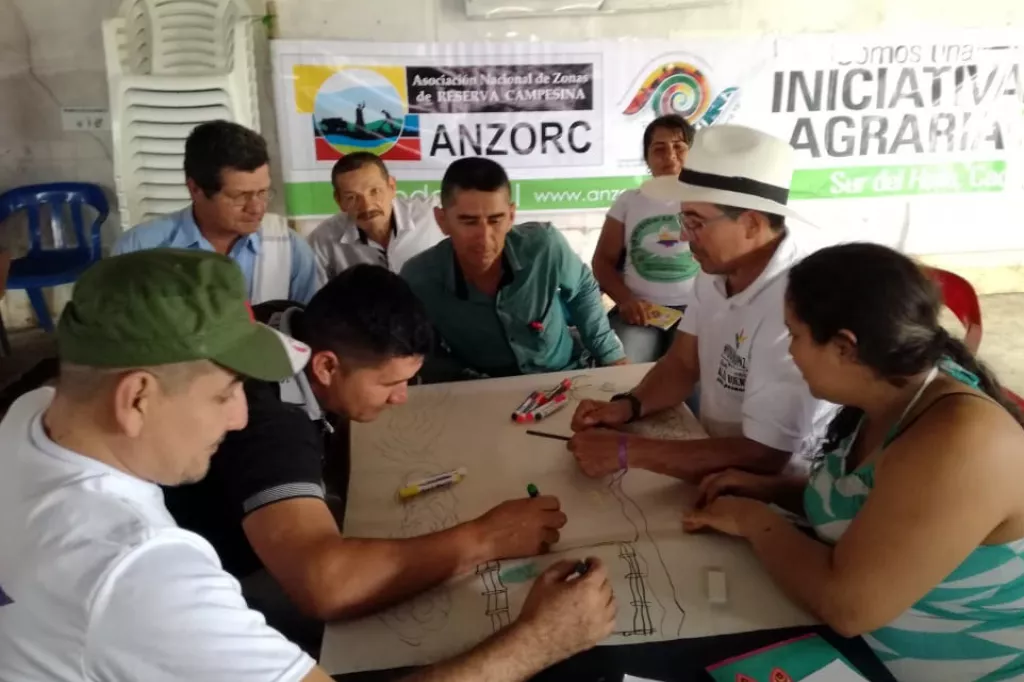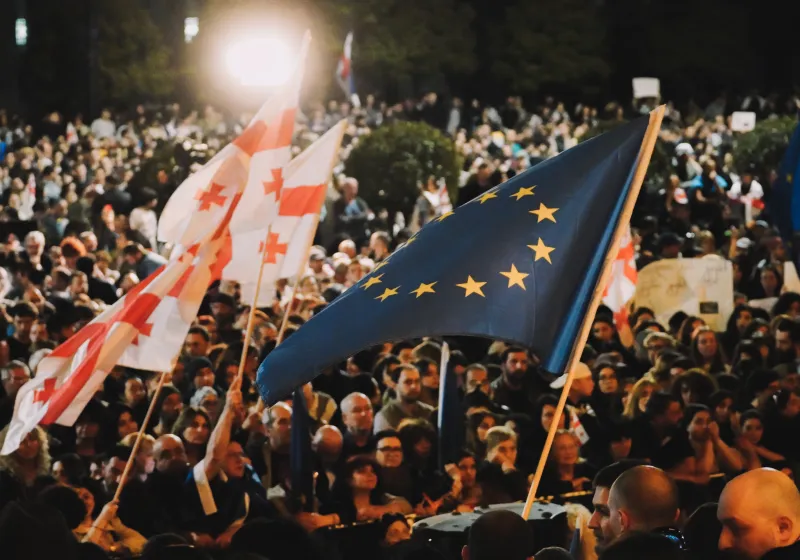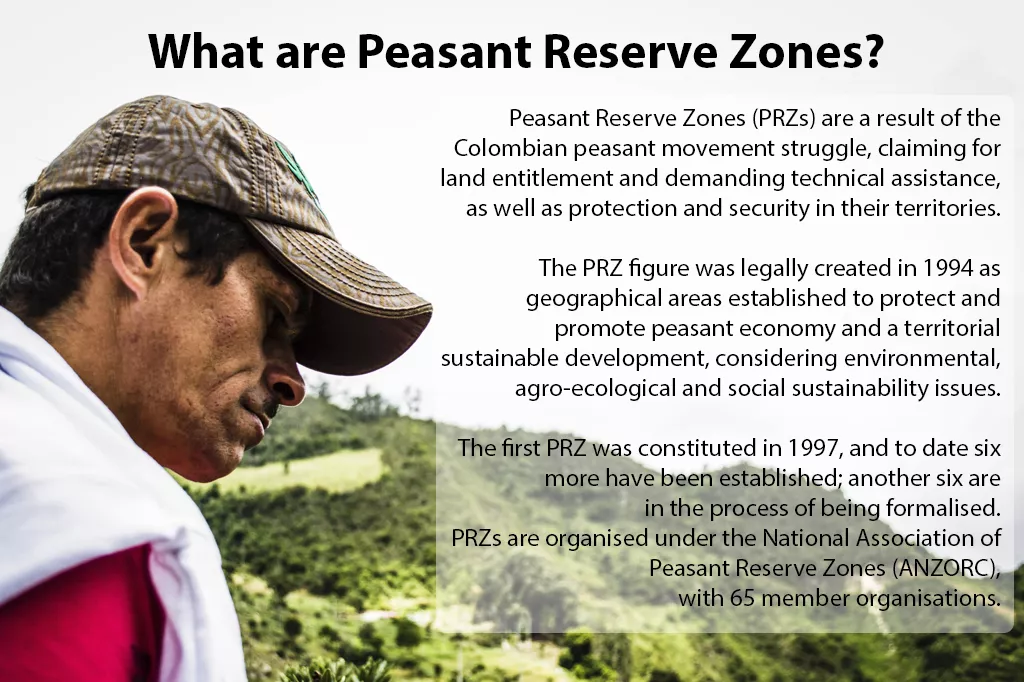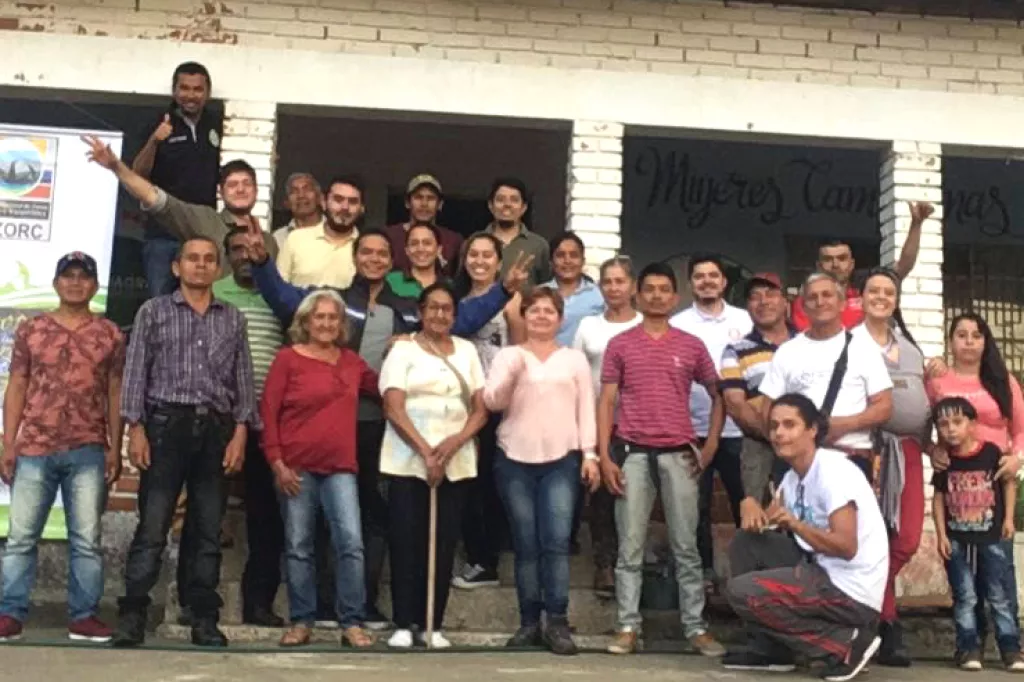Peasant Schools for Peace Building

On November 18th 2016, Erley Monroy, a renowned peasant leader from the Caquetá region in Colombia, where there was a strong presence of the FARC guerrilla, was assassinated on a road near to his farm.
In an effort to pay homage to his memory, the project Tramo a Tramo (“Section by section”) has used his name for the Peasant School, an educational model which is at the core of its on going intervention.
The project, carried on by Forum Syd, the National Association of Peasant Reserve Zones (ANZORC) and We Effect, is being developed in three stages, being the first one a comprehensive diagnosis of 57 member organisations of ANZORC (which gathers a total of 65 organisations, grouped in 7 regional nodes). The diagnosis includes information related to their administrative capacities, internal democracy, and the territorial management of their peasant reserve zones.
A Method team structured these eight components in their correspondent eight modules, containing educational material and guidelines, which in turn have compiled methodologies coming from the expertise of ANZORC, Forum Syd and We Effect. Afterwards, regional teams of trainers were formed, with the objective of knowing and appropriating the modules, so they would be able to coordinate the carrying out of the Schools in their respective nodes, training in turn local teams that can replicate the School sessions at an even more local level, in their counties.
The methodological principles of the Erley Monroy School include a peasant to peasant educational interaction (opposite to a traditional teacher-student interaction), an important component of territorial walks (the main reason why the School is always carried out in peasant territories, more precisely within peasant reserve zones), and with a balanced participation of men and women.
The third step, thus, is the actual implementation of the Erley Monroy Peasant School throughout the country. According to the diagnosis results for each node, specific versions of the School are carried on with the components that require to be strengthened.
Up to the present day, 7 versions of the school have been held and five more will be carried on in September and October, having covered all the 7 nodes with at least one first School version. Gradually, the regional and local teams will take the School to more peasant communities and organisations, strengthening their capacities for an improved and sustainable territorial management. Thus, the Erley Monroy Peasant School is becoming a valuable instrument to qualify and increase the legitimacy of the peasant reserve zones as a useful territorial development model for peacebuilding in Colombia.
Other recent articles

7 recommendations for EU policymakers after the development in Georgia
After the Law on Transparency of Foreign Influence in Georgia, here are seven concrete actions that EU Decision Makers need to take.

Kenya’s Chief Justice Hon. Martha Koome launches ForumCiv’s report on public policy gaps
“The findings from this research we are launching today stresses the importance of continuous tailormade trainings for all stakeholders involved in policy development from county officials to members...

New e-learning course presents the Swedish Partnership Programme
This course is especially relevant to newer organizations and/or those who have experienced challenges in various application processes. It presents the Swedish Partnership Programme.

